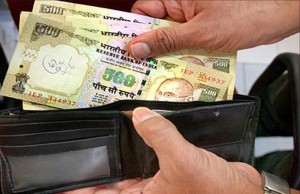This blog post written by Saanvi Singla, a student of University Institute of Legal Studies, Panjab University, highlights the meaning, scope, purpose, and applicability of the newly imposed Krishi Kalyan Cess.
Introduction
Many changes took place in the Finance Bill, 2016. Among the most highlighted ones were the increase in Service Tax from 12.36% to 14%, removal of Education Cess and Secondary and Higher Education Cess and the inclusion of the Swachh Bharat Cess (SWC) and the Krishi Kalyan Cess (KKC). Swachh Bharat Cess and Krishi Kalyan Cess are applicable at 0.5 % on all taxable services. This leads to a total tax of 15% that will be levied on all taxable services.
The proposed rate of the Goods and Services Tax (GST) is around 17-18%. So it can be seen that service tax rate is being moderately increased to reach the proposed level of GST[1]. Krishi Kalyan Cess has been made applicable from the 1st of June 2016.
What is a Cess?
A cess is a kind of tax that is levied to raise funds for a specific purpose by the government. The examples of a cess are Education Cess and Secondary and Higher Education Cess. It was specifically utilized for the funding of primary and higher secondary education, respectively.
According to Article 270 of our Constitution, the cesses imposed by the Parliament for a specific purpose need not be shared with any state governments. If a certain amount is left unspent, then that amount is carried forward to the next year. It is mandatory for the Centre to share revenue from other taxes, but in the case of cesses, the Centre is allowed to retain the whole amount.
What does the Krishi Kalyan Cess mean?
Krishi Kalyan Cess is levied for the purpose of financing and promoting initiatives to improve agriculture or any other relating purpose. The proceeds received through this cess will be credited to the Consolidated Fund of India. The Government can utilize these funds after due consideration of laws made by the Parliament. 
It is a cess which will be collected by the provisions provided in Chapter VI of the Finance Bill, 2015. It will be charged on all taxable services at a rate of 0.5%.
The provisions made under Chapter V of the Finance Bill, 1994 and the rules made, including those relating to refunds and exemptions from tax, interest, and imposition of penalty shall apply to the levy and collection of the Krishi Kalyan Cess on taxable services, as they apply in relation to the levy and collection of tax on any such taxable services under the said chapter or the rules made.
From which date is the Krishi Kalyan Cess applicable?
Krishi Kalyan Cess has been made applicable since the 1st of June 2016. Krishi Kalyan Cess will not apply to the services that are covered under the “Negative List” and “Mega Exemption List”. According to the Notification No. 22/2015, Krishi Kalyan Cess will not be applicable on services that are exempted from the levy of Service Tax.
Rule 5 of Taxation Rules, 2011 will refer to the applicability in the cases on ongoing contracts as of 1st June 2016. So, if the payment is made before the said date, this cess will not be applicable.
How will the Krishi Kalyan Cess be calculated?
Krishi Kalyan Cess will be calculated in the same way Service Tax is calculated. So, Krishi Kalyan Cess will have the same taxable value as that of Service Tax. Krishi Kalyan Cess will be calculated on the amount of the service provided and not on the Service Tax. An example for a better understanding of the calculation of Krishi Kalyan Cess is given below:
For a service worth Rs. 100, we will have to pay Rs. 14 for Service Tax at 14%, Rs 0.50 for Swachh Bharat Cess at 0.50% and Rs. 0.50 for Krishi Kalyan Cess at 0.50%.
So the total payable amount on the service of Rs. 100 is Rs. 114 + 0.50 + 0.50 = Rs. 115.
Is it necessary to mention about the Krishi Kalyan Cess separately in an Invoice?
Krishi Kalyan Cess will be imposed, charged, collected and paid to the Central Government independent of the Service Tax. However, this needs to be mentioned separately in an invoice. It has to be accounted for separately in the books of account and has to be paid separately under a separate accounting code.
Where can I find legal provisions for the Krishi Kalyan Cess?
Krishi Kalyan Cess was introduced in the Union Budget of 2016-17. A statutory provision was made under Chapter VI, Clause 158 in the Finance Bill, 2016 for levying of this cess.
How will the Krishi Kalyan Cess money be utilized? 
The proceeds gathered from the Krishi Kalyan Cess will be exclusively used for financing initiatives for the improvement of agricultural techniques and welfare of farmers. The proceeds collected through the Krishi Kalyan Cess will be accumulated in the Consolidated Fund of India and the Central Government after due consideration of the laws set by the Parliament regarding the utilization of this money for its specified purpose.
Is the Krishi Kalyan Cess applicable on the service of Reverse Charge Mechanism?
Krishi Kalyan Cess will apply to the service of Reverse Charger Mechanism as it applies to all taxable services. So, Krishi Kalyan Cess is applicable along with Service Tax on the services that are availed and covered under the Reverse Charge Mechanism.
What will be the liability in the case of Reverse Charge Mechanism when the services availed are before 1st June 2016, and the payment for those services are made after 1st June 2016?
In this case of Reverse Charge Mechanism Rule, 7 of Point of Taxation Rules will apply. According to them, the cess is considered as an application on the day the payment is made. Hence, in this case, Krishi Kalyan Cess will apply.
If a service is covered under Abatement, then what would be the effective rate of tax?
Services on which tax is levied at a certain percentage will attract Krishi Kalyan Cess on the same percentage of the value as provided under the Notification No. 26/2012, so this notification will apply in the same way to Krishi Kalyan Cess as it does to Service Tax.
Is Cenvat Credit on payment of the Krishi Kalyan Cess permitted under Cenvat Credit Rules, 2004?
Yes, Cenvat Credit is available for the payment of Krishi Kalyan Cess and will be utilized only for the payment of Krishi Kalyan Cess. Due to this reason, separate accounts are to be maintained. One can also claim a refund for the filling of Krishi Kalyan Cess.
Refund for Krishi Kalyan Cess shall be allowed to the exporter of services and the exporter of goods as there is no restriction of its availability.
Is the Krishi Kalyan Cess same as the Krishi Kalyan Surcharge?
No, Krishi Kalyan Cess and Krishi Kalyan Surcharge are entirely different in nature.
In order to provide a stable and predictable tax structure and to reduce black money, it was announced in the Union Budget that a domestic taxpayer can declare his undisclosed income or income represented in the form of any asset can be shown by paying a tax of 30% and surcharge on the existing tax at 7.5% and a penalty of 7.5% which becomes a huge total of 45%. Such a declaration will have immunity from future prosecution.
The surcharge of 7.5% in the above scenario is known as Krishi Kalyan Surcharge and will be used in the upliftment of the agriculture and rural economy[2].
Conclusion
The whole idea behind the introduction of Krishi Kalyan Cess is noble with an intention to improve and upgrade overall agrarian economy, which constitutes a huge portion of the Indian GDP. However, it doesn’t help the various initiatives taken by the government which is aimed at simplification of the business process.
Central Government needs to provide enough ease to projects like Make in India, Startup India for doing Business. Krishi Kalyan Cess is likely to disturb these initiatives due to its complexity as this will lead to an addition to the cost of goods and will ultimately result in an increase in the rates of goods and services.
The Central Government is making a lot of effort to introduce the Goods and Services Tax (“GST”) in India. The logic of introducing and removing new levies every year under the banner of new and different types of cesses seems unnecessary at this stage.
So we can see that Krishi Kalyan Cess has its advantages and disadvantages. But if this cess is used in an appropriate manner, then it can be very beneficial to the agrarian society.
[divider]
References:
[1] http://www.pradhanmantriyojana.co.in/krishi-kalyan-cess-kkc/
[2] http://www.profitbooks.net/krishi-kalyan-cess-kkc/













your report is good; KKC is unnecessary ? s too many such .5% taxes under one pretext or the other. Govt needs to generate out of tax money proper interst rates might be even 5% that would meet the states’s perpetual hubger for taxes.